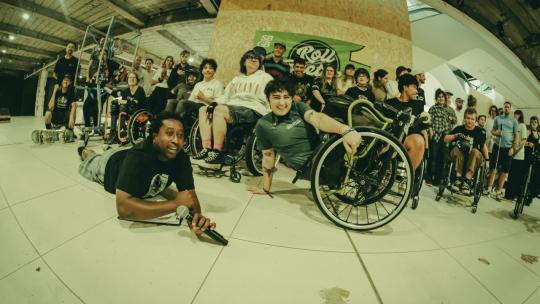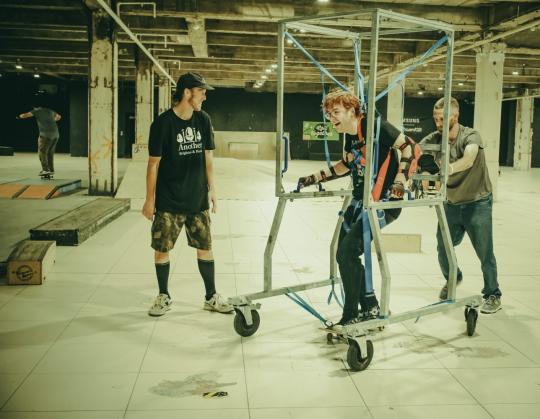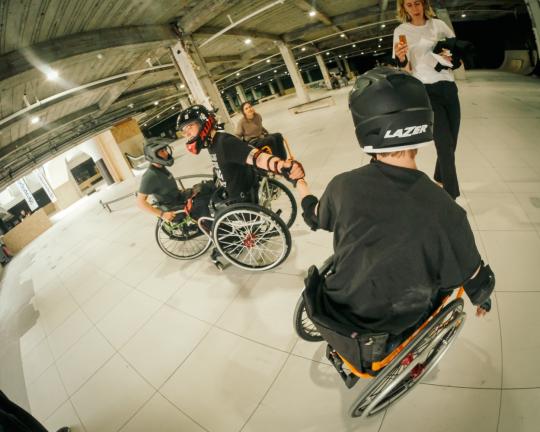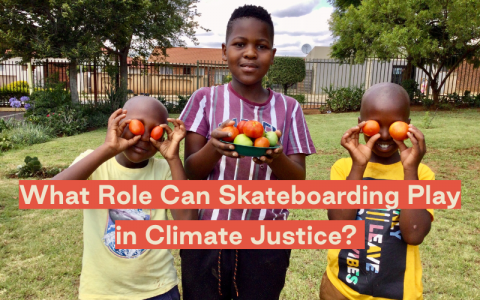This guest blog was originally posted by Amber Edmondson via LinkedIn on June 9. Amber is the Coach Development Lead at Skateboard GB, designing learning that’s inclusive, creative and true to skateboarding. We loved the tips she shared about accessible and adaptive skateboarding, and asked if we could re-post it on Goodpush. Happy reading!
Last Saturday, we held Roll Together – a one-day adaptive skateboarding and WCMX event at Shredenhams in Bristol.
“The event showed me what’s possible.”
People travelled from Yorkshire, Bournemouth and all over the country to be there. Some had never been in a skatepark before, others had been skating for years. What they had in common was that they wanted to skate, they wanted to connect, and they wanted a space that actually saw them.
We kept it simple: listen first, make the effort, and then step back and let the community take it where it needed to go.
“It was literally my only opportunity to be able to try WCMX.”
We didn’t have a massive budget, but we did have intent.
We started by asking the community what would actually make a difference. Not what would look good in a photo – the real stuff: how to get into the building, where the toilets were, what would be hard, what would be easy, and what was still a work in progress. We worked with members of the community to plan the event, like two-time world champion WCMXer Tomas Woods.
We were honest. People knew what they were coming into, and that respect made a difference.
“It basically means that there’s space for everybody in skateboarding… no matter what disability you have, what your ability is – you do fit in.”
That said, of course, the best-laid plans... on the day, the roller shutter jammed, blocking the main accessible entrance. Panic kicked in among the event team for a second, but the attendees weren't fazed and enjoyed teasing us for our stressed faces. Then Andre from Shredenhams built a ramp for the less accessible entrance, and within 20 minutes, everyone was rolling in again – one of the perks of being in a skatepark, I guess.
22 hours. 4 days. A car full of borrowed kit.
To make sure there was a range of equipment available to try, I hired a van and drove 22 hours across 4 days, collecting and then returning adaptive skateboarding and WCMX kit from parks around the UK like Graystone and Adrenaline Alley. It was a mission – and I’ve now listened to enough true crime podcasts to last a lifetime – but it was completely worth it.
"It wasn't just that it was a space where wheelchair skaters were welcomed there were chairs to use there was equipment to use, there was adaptive skateboarding equipment to use... it was an education day as well as an enrichment day."
We made space for people to learn at their own pace. The energy, support and joy came from the people who showed up.
Accessibility isn’t about ‘extra’. It’s about equity.
There’s so much potential in adaptive skating – not because people need special treatment, but because they deserve the same opportunities as anyone else.
Skateboarding doesn’t need fixing. It just needs to be accessible.
I think sometimes we get stuck debating the theory – what “good” inclusion looks like, or whether we’re ready to do it at all. But it’s not difficult. It takes graft, energy and a bit of charm (especially when borrowing kit), but the real key is just: do it.
"I've literally met somebody who lives like 20 minutes from me who I'm now giving a lift home to but we're also gonna start meeting at the skate park and skating together more often."
What’s next?
We learned loads. We’re now building a social media resource to map which skateparks in the UK have adaptive equipment or run WCMX sessions.
We’re also teaming up with Access Sport to offer a skate-specific disability inclusion webinar for coaches and skateparks looking to grow their confidence.
And if I’m dreaming big, which I am, I’d love to grow Roll Together into a series. Each one at a different skatepark that’s already doing great work in the adaptive skateboarding and WCMX space. Each one bringing the community together and giving back to the people and places who’ve made space for adaptive skateboarding to thrive.
“It was just lovely to come to something that was thought through properly.”
For those working in coaching, youth or community sport:
Especially if you’re outside of skateboarding, this is your reminder that you don’t need all the answers.
Start with the people you’re trying to include. Ask what would help. Be honest about what’s not perfect. Do what you can. And trust the community to do the rest.
All photos by: Morgan Roberts




